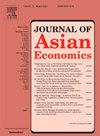中国人口在数字经济中的空间流动性
IF 3.4
3区 经济学
Q1 ECONOMICS
引用次数: 0
摘要
数字经济已成为中国的一股变革力量,通过先进技术和互联互通重塑劳动力市场和空间人口动态。本研究考察了数字经济发展如何影响2011年至2018年289个地级市的人口流动。我们的研究结果表明,数字化显著推动了人口流入。这种影响主要是通过服务业的扩张——尤其是以生活为导向的服务业——产生了大量的就业机会。异质性分析显示,规模更大、密度更大的城市的影响更强,突出了集聚经济在放大数字影响方面的作用。考察胡线——人口稠密的东南与人口稀少的西北之间的历史分界线——我们发现,数字化促进了东南地区的流入,但对西北地区没有显著影响。与空间再平衡的预期相反,数字增长强化了中国的城市集中度。这些结果挑战了“距离死亡”假说,为数字化转型中的城市政策和区域发展战略提供了见解。本文章由计算机程序翻译,如有差异,请以英文原文为准。
Spatial mobility of China’s population in the digital economy
The digital economy has emerged as a transformative force in China, reshaping labor markets and spatial population dynamics through advanced technologies and connectivity. This study examines how digital economic development influences population mobility across 289 prefecture-level cities from 2011 to 2018. Our findings reveal that digitalization significantly drives population inflows. This effect is primarily channeled through the service sector’s expansion—particularly life-oriented services—which generates substantial employment. Heterogeneity analysis shows stronger effects in larger, denser cities, highlighting agglomeration economies’ role in amplifying digital impacts. Examining the Hu Line—a historical divide separating the populous southeast from the sparse northwest—we find that digitalization enhances southeast inflows but has no significant effect in the northwest. Contrary to expectations of spatial rebalancing, digital growth reinforces China’s urban concentration. These results challenge the “death of distance” hypothesis, offering insights for urban policy and regional development strategies amid digital transformation.
求助全文
通过发布文献求助,成功后即可免费获取论文全文。
去求助
来源期刊

Journal of Asian Economics
ECONOMICS-
CiteScore
4.70
自引率
9.40%
发文量
90
期刊介绍:
The Journal of Asian Economics provides a forum for publication of increasingly growing research in Asian economic studies and a unique forum for continental Asian economic studies with focus on (i) special studies in adaptive innovation paradigms in Asian economic regimes, (ii) studies relative to unique dimensions of Asian economic development paradigm, as they are investigated by researchers, (iii) comparative studies of development paradigms in other developing continents, Latin America and Africa, (iv) the emerging new pattern of comparative advantages between Asian countries and the United States and North America.
 求助内容:
求助内容: 应助结果提醒方式:
应助结果提醒方式:


